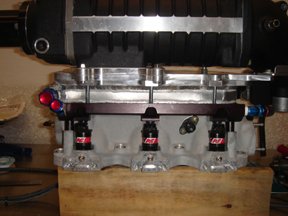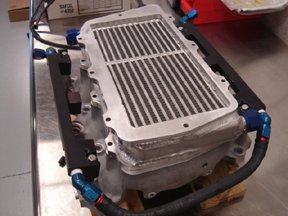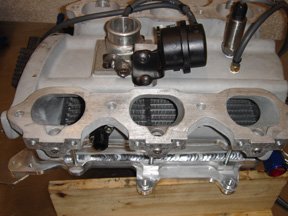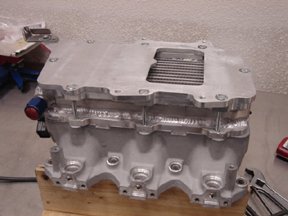Hi Guys,
Here is a couple pictures of the aftercooler we built for Kip Olson's supercharger monster. We are seeing on the Dyno IAT from 97 at the start of a pull to 125 at the end and it drop back down to 97 by the time I save the data on the AEM EMS. We are running 9 psi on a Comptech 3.5 liter motor using a 2.3 liter Lysholm. We are making about 510 hp @ the wheels and turning the boost up a couple psi before NSXPO in Ohio. Cheers, Shad 916-861-0032, [email protected]




Here is a couple pictures of the aftercooler we built for Kip Olson's supercharger monster. We are seeing on the Dyno IAT from 97 at the start of a pull to 125 at the end and it drop back down to 97 by the time I save the data on the AEM EMS. We are running 9 psi on a Comptech 3.5 liter motor using a 2.3 liter Lysholm. We are making about 510 hp @ the wheels and turning the boost up a couple psi before NSXPO in Ohio. Cheers, Shad 916-861-0032, [email protected]









